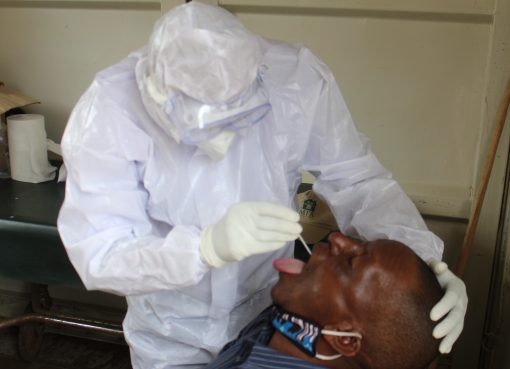The ballooning population of urban dwellers in Kitui town threatens its sewerage capacity, amid concerns of environmental pollution occasioned by uncontrolled effluent discharge.
Speaking on Wednesday during a site visit of Kitui County Development and Implementation Coordination Committee to TANATHI water services’ sewerage plant on the outskirts of Kitui town, area County Commissioner John Ondego warned that in less than 15 years, the Sh 2.2 billion plant will not sustain effluent discharge from the residents and businesses.
“TANATHI should start its expansion plans in earnest in a bid to stem the illegal effluent discharge into water bodies. The capacity of this sewerage plant will be stretched and there is need to start plans to develop another one,” said Ondego.
County Commissioner said that concerns about sewage flooding, sewer bursts and the discharge of raw or semi-treated sewage into the environment have made news in the recent past.
Ondego disclosed that appropriate sanitation is fundamental not only in promoting public health, but also in ensuring environmental sustainability.
“Sewerage services play an important role of protecting public health through proper sanitation standards that prevent the transmission and spread of water borne diseases such as diarrhea and cholera,” said the seasoned administrator.
He further said that well planned and regulated sewerage system protects the environment through nutrient recycling as well as preventing surface and underground water contamination.
The County Commissioner pointed out that in a bid to address sewerage problems in urban areas in Kenya, the government has undertaken a number of capital sewerage projects in some of the major towns.
Ondego said that it is therefore necessary to assess the effectiveness of these projects in ensuring an adequate sewerage for the urban population and address its attendant challenges.
TANATHI Eng. Francis Siva said that plans are underway to procure land for expansion and preparing a budget for the next phase of the sewerage project.
“For now, Kitui town residents, businesses and institutions are sorted. However, we need to develop a mechanism to address the rapid population growth that will in the long run stretch the current sewerage capacity of 2, 400 cubic metres,” said Eng. Siva.
In July, Kitui Water and Sanitation Company (KITWASCO) Managing Director Geoffrey Kiita was arrested by NEMA enforcement officers for abetting toxic effluent discharge into Kalundu River.
NEMA Lower Eastern Director John Wafula said the raw effluent discharge into the river was harmful to the aquatic ecosystem, livestock and residents dependent on the river for domestic use.
Wafula lamented that KITWASCO had entered into agreement with various institutions including Jordan Hospital to connect their raw waste into the company’s sewer line system that was inadequate to manage the effluent discharge.
“We find KITWASCO liable for environmental pollution in this area and thus the MD has to pay the ultimate price for gross mismanagement of the company’s sewer line at the expense of environmental conservation,” said the NEMA Director.
Wafula observed that the violation to control the effluent discharge had polluted Kalundu River and the surrounding ecosystem leading to a foul smell that is hazardous to the residents.
“Part of the toxic discharge is emanating from Jordan Hospital, which houses both the hospital and morgue. The hospital entered an agreement that was not honored by KITWASCO,” he said.
Wafula called on the hospital to install an incinerator to cater for the specialized requirements during the internal waste management process that can also be used as a viable bio-secure alternative hospital waste disposal system.
By Yobesh Onwong’a
Friday, November 22, 2024



